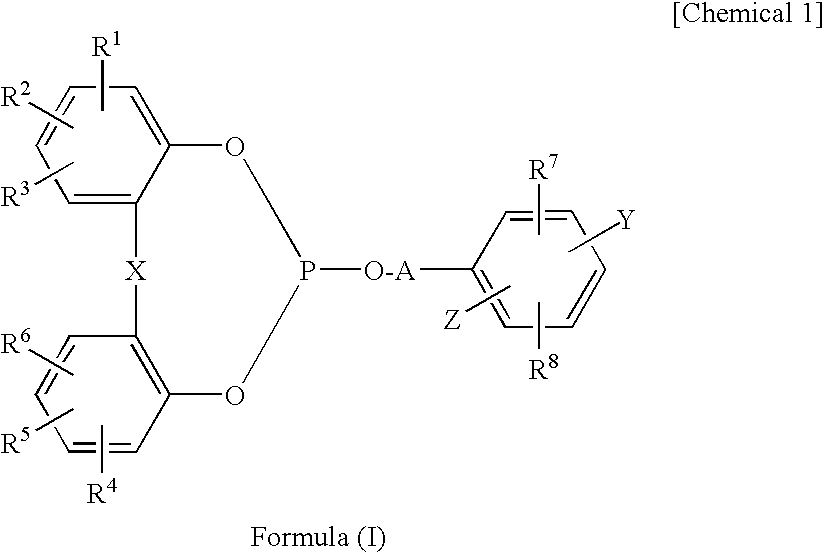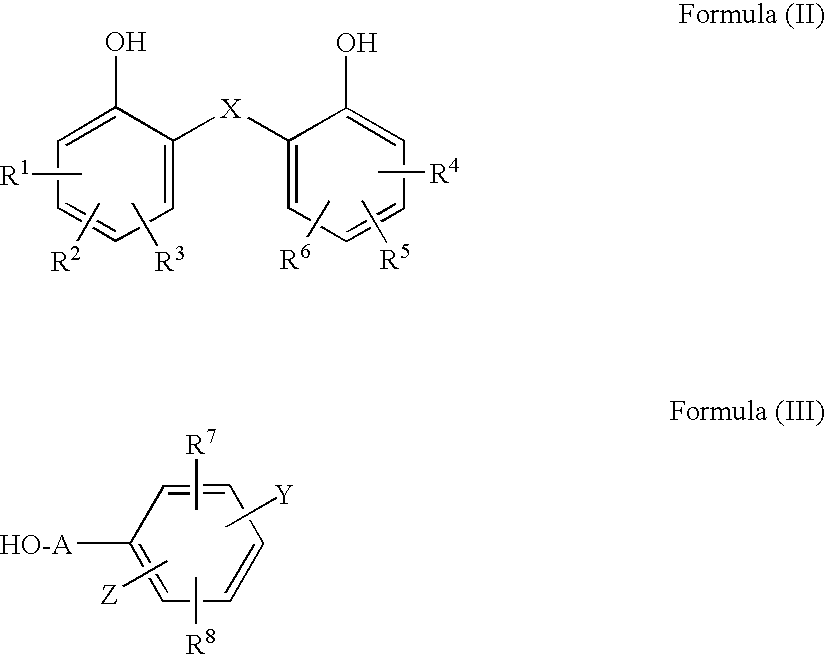Cellulose Ester Film, Manufacturing Method Thereof, Optical Film, Polarizing Plate and Liquid Crystal Display
a technology of cellulose ester and manufacturing method, which is applied in the direction of instruments, synthetic resin layered products, transportation and packaging, etc., can solve the problems of affecting reducing the efficiency of solvent recovery, so as to reduce the fluctuation of retardation properties and reduce manufacturing burdens. , the effect of reducing the burden on the facility
- Summary
- Abstract
- Description
- Claims
- Application Information
AI Technical Summary
Benefits of technology
Problems solved by technology
Method used
Image
Examples
example 1
Preparation of Cellulose Ester Film
[0187]Cellulose ester C-1 (CAP-482-20 manufactured by Eastman Chemical Co.) was dried in air at 130° C. at ambient pressure for 2 hours, and then cooled to room temperature. Into this cellulose ester, 1.0 part by weight of trimethylolpropanebenzoate (Chemical 16) and 0.5 parts by weight of compound 1 of the present invention were added with respect to the cellulose ester, and the resulting mixture was melted by heat to a melting temperature of 230° C. Subsequently, the melt was extruded and molded with a T die, and further, the resulting film was stretched at a stretching ratio of 1.2×1.2 at 160° C. to obtain a cellulose ester film having a thickness of 80 μm (Sample No. 1-1). The water content of cellulose ester was determined by a heat-drying type MOISTURE ANALYZER MX-50 manufactured by A&D Co., Ltd.
[0188]Each of cellulose ester films of Inventive sample Nos. 1-2-1-5 and 1-8-1-19, and Comparative sample Nos. 1-6 and 1-7 (each having a thickness o...
example 2
[0229]Similarly to Example 1, cellulose ester films having a kind of cellulose ester, a water content, a kind of additives and an addition amount as described in Table 3 were prepared. Results evaluated as above were shown in Table 4.
TABLE 3*3*4*5Plasticizer*6Compound*6*7*6*8*6*92-1C-11.0*11Compound 10.25P-10.25Inv.2-2C-11.0*15Compound 10.25P-10.25Inv.2-3C-11.0*130Compound 10.25P-10.25Inv.2-4C-11.0*10.5Compound 10.25P-10.25Inv.2-5C-11.0*150Compound 10.25P-10.25Inv.2-6C-11.0*15Comparative0.25P-10.25Comp.Compound 12-7C-11.0Comparative5Comparative0.25P-10.25Comp.Compound 2Compound 12-8C-11.0*15Compound 10.25AO-10.25Inv.2-9C-11.0*15Compound 10.01AO-20.01Inv.2-10C-11.0*15Compound 10.25AO-20.25Inv.2-11C-11.0*15Compound 12.5AO-22.5Inv.2-12C-11.0*15Compound 10.002AO-20.002Inv.2-13C-11.0*15Compound 15.0AO-25.0Inv.2-14C-11.0Comparative5Comparative0.25AO-20.25Comp.Compound 2Compound 12-15C-11.0*15Compound 10.25S-10.25Inv.2-16C-13.0*15Compound 10.25S-10.25Inv.2-17C-15.0*15Compound 10.25S-10.25I...
PUM
| Property | Measurement | Unit |
|---|---|---|
| melting temperature | aaaaa | aaaaa |
| weight | aaaaa | aaaaa |
| optical | aaaaa | aaaaa |
Abstract
Description
Claims
Application Information
 Login to View More
Login to View More - R&D
- Intellectual Property
- Life Sciences
- Materials
- Tech Scout
- Unparalleled Data Quality
- Higher Quality Content
- 60% Fewer Hallucinations
Browse by: Latest US Patents, China's latest patents, Technical Efficacy Thesaurus, Application Domain, Technology Topic, Popular Technical Reports.
© 2025 PatSnap. All rights reserved.Legal|Privacy policy|Modern Slavery Act Transparency Statement|Sitemap|About US| Contact US: help@patsnap.com



